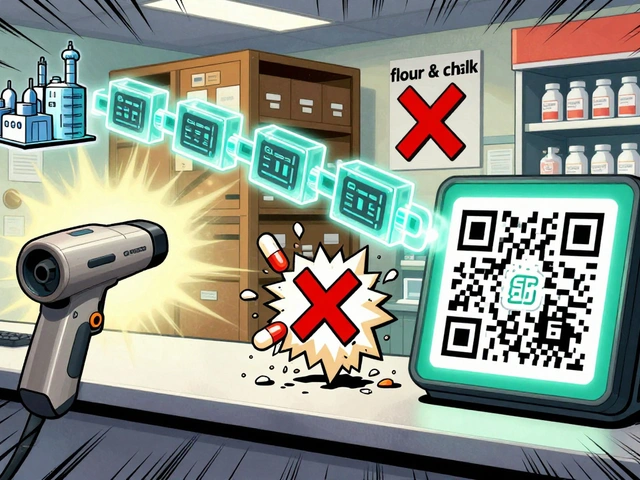How Primidone Works as an Anticonvulsant: Science Explained
Discover the science behind Primidone's anticonvulsant action, its metabolism to phenobarbital, key pharmacokinetic traits, and how it fits into epilepsy therapy.
Living with seizures can feel like walking a tightrope, but a few everyday habits can make a big difference. Below you’ll find clear steps you can start using today to reduce the chances of a seizure and handle one if it pops up.
Everyone has something that nudges their brain toward a seizure. Common culprits are lack of sleep, high stress, and flashing lights. Keep a quick journal on your phone – note the time, what you ate, how you felt, and whether a seizure happened. After a week you’ll see patterns that let you avoid the worst triggers.
Taking your anti‑seizure meds exactly as the doctor says is the cornerstone of control. Set an alarm, use a pill box, and never skip a dose. If you notice side‑effects or feel the meds aren’t working, call your prescriber right away – adjustments are normal and can keep you steady.
Besides prescription pills, some over‑the‑counter supplements can help, but only after you talk to a professional. Vitamin D, magnesium, and omega‑3 fatty acids show promise for a few people, but they’re not a replacement for your main meds.
Stress is a sneaky trigger. Try simple breathing exercises: inhale for four counts, hold two, exhale four. Do it a few times when you feel tension building. Even a short walk or a quick stretch can lower cortisol and keep your brain calm.
Sleep isn’t optional. Aim for 7‑9 hours of consistent rest. If you struggle with insomnia, keep screens out of the bedroom, limit caffeine after noon, and create a dark, cool environment. A regular bedtime signals your brain it’s safe to settle.
Hydration matters too. Dehydration can lower seizure threshold, so sip water throughout the day. A good rule: drink enough that your urine is light yellow, not dark.
If a seizure does start, stay safe: move dangerous objects away, protect the head with a pillow, and time the episode. Most seizures stop on their own within a couple of minutes. Call emergency services only if it lasts longer than five minutes, you’re injured, or it’s your first seizure.
Family and friends can be part of your control plan. Teach them what to do – stay calm, turn the person on their side, time the seizure, and don’t put anything in the mouth. Knowing you have a solid support crew reduces anxiety and improves overall safety.
Finally, keep your doctor in the loop. Bring your seizure journal to appointments, discuss any new symptoms, and review medication levels regularly. A collaborative relationship means you’ll get the right tweaks before problems grow.
Seizure control isn’t about a single miracle; it’s a bundle of small, steady actions. Pick one or two tips from above and try them this week. As you add more, you’ll notice fewer surprises and a greater sense of control over your health.
Discover the science behind Primidone's anticonvulsant action, its metabolism to phenobarbital, key pharmacokinetic traits, and how it fits into epilepsy therapy.

Learn how alcohol interacts with common medications, the real risks involved, and what steps you can take to stay safe. Includes high-risk drug combos, practical tips, and updated 2025 guidelines.

Learn how to safely buy cheap generic Paxil online in Australia, verify pharmacies, compare prices, use telehealth prescriptions, and avoid scams.

Discover 9 effective alternatives to Isotroin for acne treatment. From hormonal to bacterial acne, these options cater to different needs and skin types. Learn about each alternative's benefits and drawbacks to make an informed decision on the best acne solution for you. This comprehensive guide includes both over-the-counter and prescription options to help fight acne effectively.

Blockchain is transforming how generic drugs are tracked from factory to pharmacy, cutting counterfeit medicines by 99% and making online pharmacies safer. Learn how it works, who’s using it, and what it means for your health.

Learn how Disoproxil can affect mood and get practical tips to control stress and anxiety while staying on the antiviral.
